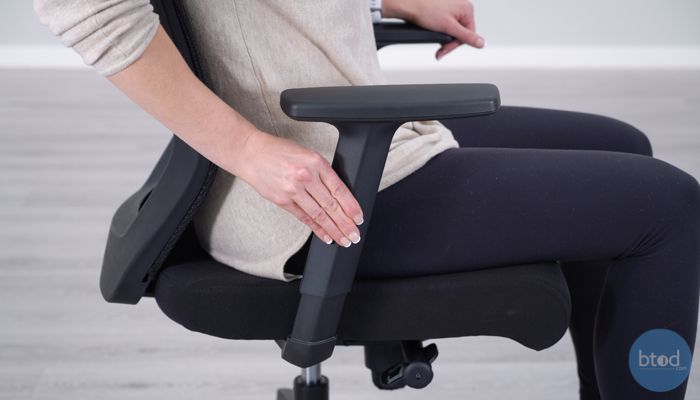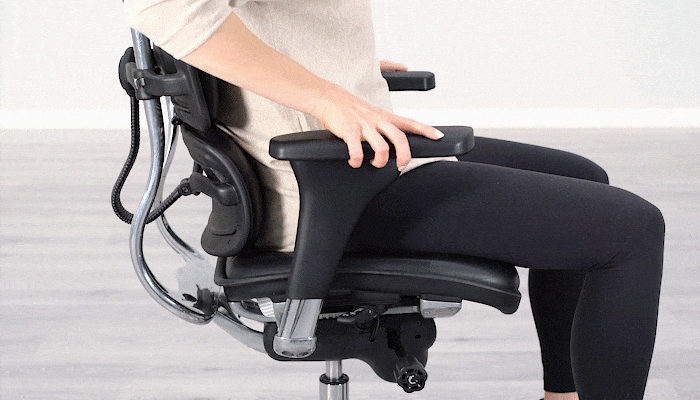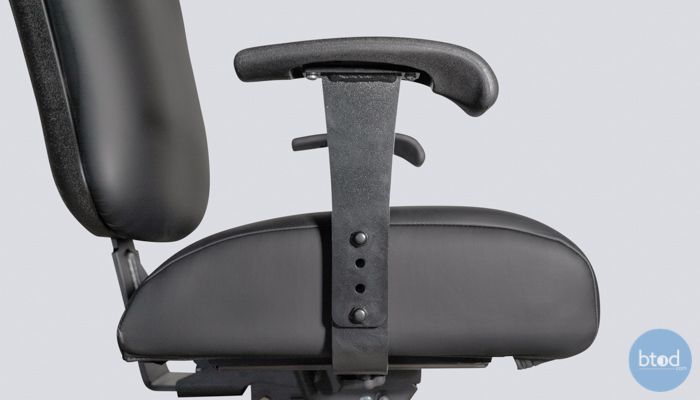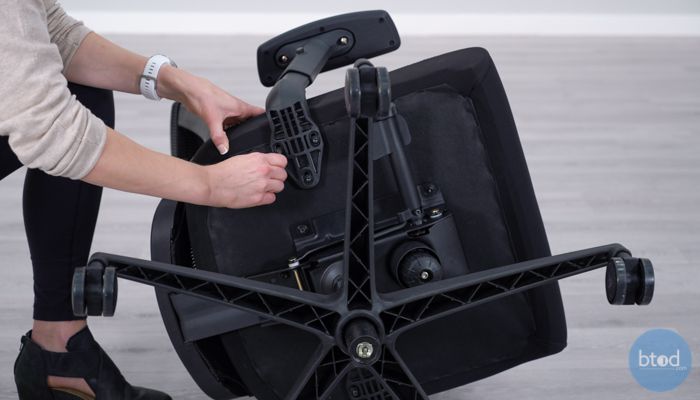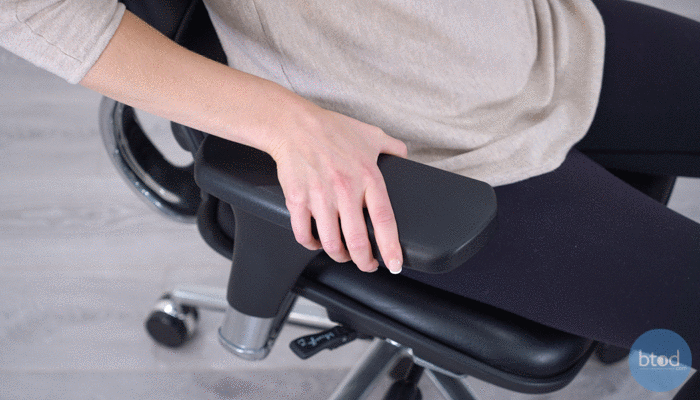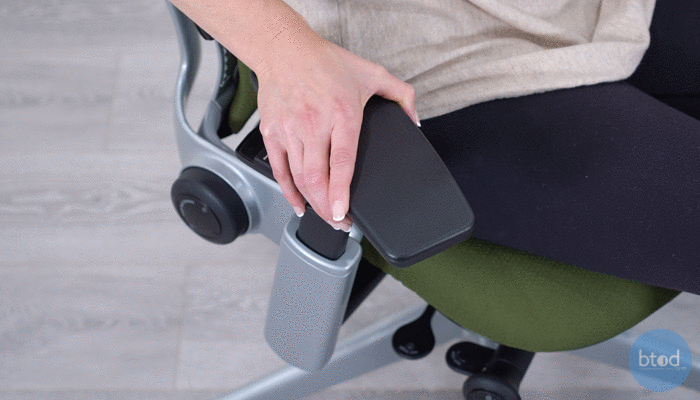In your search for the perfect ergonomic chair, one of the most important factors to consider is what type of armrest is right for you. While it may seem like a daunting task, there are only four common types of armrest adjustments. Height, width, depth, and pivot adjustments are all essential customizations to ensure you’re comfortable while you’re sitting on your chair.
Full Disclaimer: We are an office furniture dealer and sell some of the products we review. To learn more about the products we sell, our review process and why you can trust us, please visit: Why we’re different. Who is BTOD.com and The Breakroom Blog?
4 Common Armrest Adjustments
1. Adjusting Your Armrest Height
Adjusting armrest height is one of the most well-known and basic adjustments for your chair. The goal behind this adjustment is to put your arms in the proper position to reduce the amount of stress in your neck and shoulders you acquire from sitting.
Each chair has a different way of adjusting the height of the armrests. One style used on the BTOD 100MC is a push button function located on the side of each armrest that allows for raising and lowering.
A ratchet function is another style of height adjustment that can be found on chairs like the Ergohuman ME7ERG. As you pull up on the arm pad, the armrest locks in different positions and falls as you reach the top position.
The Herman Miller Aeron uses a lever system to raise and lower your armrests. When the lever is loosened, it allows you to adjust your armrest to your desired height. To lock your armrest in place, simply tighten the lever.
Another type of height adjustment you may see is more common on heavy duty chairs such as the Concept Seating 3156HR. Because these chairs are made to hold a lot of weight, a bolt system is used to ensure everything stays intact.
2. Adjusting Your Armrest Width
Width adjustment comes in handy when you’re trying to customize your chair to fit your specific body type or help with different types of tasks that you perform at your desk.
The most common width modification is an arm pad adjustment. In a chair like the Steelcase Leap V2, you simply slide the arm pad left or right to expand or decrease the width of your armrests.
Another adjustment you can make to your armrest’s width happens underneath the seat pad. The BTOD 100MC uses a more cumbersome option, with accessible bolts under the base of the chair that you can loosen to adjust width. You will have to get out of your seat and flip the chair to gain access to the bolts.
Other chairs like the Eurotech 498SL use a knob located below each armrest that can be loosened to adjust the width and then tightened to lock in place. This can be done while you’re seated in the chair making it a simpler task than adjusting chairs with bolt adjustable width.
The Office Master Affirm Chair features duel armrest width adjustment options. You can slide the arm pads to your desired width and use a lever below the armrests to slide the arms in or out.
3. Adjusting The Depth Of Your Armrest
Depth adjustment is important for those who like to sit closer to their desk or recline in their chairs. You’ll find that most armrests with depth adjustment capabilities feature arm pads that can slide forward or back to your liking. Chairs like the BTOD Akir and the Ergohuman ME7ERG are equipped with these simple abilities.
This adjustment is also great for those who want to recline in their chair while maintaining good arm support. When you sit in a chair without depth adjustment capabilities, you’ll notice as you recline, the gap between the back of the chair and the armrests will widen, limiting arm support.
4. Armrest Pivot Adjustments
While pivot adjustment may not be the most crucial feature of a chair, it is still important for those who want good forearm support while typing at their keyboard. Most pivot adjustments originate from the arm pad with a wide range of motion, depending on the position of the depth and the model.
The Herman Miller Aeron arm pads pivot from the back two-thirds of the armrest have a solid range of movement from left to right that is dependent on the depth of the arm pad.
A more unique pivot function can be found on the Steelcase Leap v2. When choosing your arm pad position, you can pivot from both the front and back of the pad, providing a wider range of options for arm placement.
The most widely adjustable arm set that we’ve tested is on the Steelcase Gesture. With two different joints found on the armrest itself, the pivot capabilities are exaggerated allowing for complete armrest flexibility.
Bottom Line
Now that you understand the 4 most common armrest adjustments and how they function, you can decide what type is most important when selecting your next chair. Finding the right chair for you shouldn’t be a difficult task. If you have any questions, don’t hesitate to reach out to us.
Additional Office Chair Resources
- Herman Miller Aeron Chair (Review / Rating / Pricing)
- Steelcase Leap v2 Ergonomic Office Chair (Review / Rating / Pricing)
- Humanscale Diffrient Smart Chair (Review / Rating / Pricing)
- 7 Best Big and Tall Office Chairs
- 5 Best Ergonomic Office Chairs For Back Support
- 9 Most Common Problems With The Raynor Ergohuman Chair


